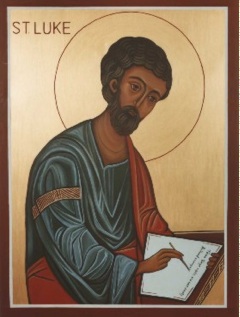 That opening sketch in Acts (1:1-11) is wide-ranging and cosmic in its theology. We return to earth with the next scene: the earliest followers of Jesus are gathered for prayer (1:12-14):
That opening sketch in Acts (1:1-11) is wide-ranging and cosmic in its theology. We return to earth with the next scene: the earliest followers of Jesus are gathered for prayer (1:12-14):
Then the apostles returned to Jerusalem from the hill called the Mount of Olives, a Sabbath day’s walk from the city. When they arrived, they went upstairs to the room where they were staying. Those present were Peter, John, James and Andrew; Philip and Thomas, Bartholomew and Matthew; James son of Alphaeus and Simon the Zealot, and Judas son of James. They all joined together constantly in prayer, along with the women and Mary the mother of Jesus, and with his brothers.
Luke tells us a few things that are very important here about mission and about what God was doing in that earliest community:
First, there is an apostolic core to the gospel mission of Acts. This list is the same, apart from some order difference, as that found in Luke 6:14-16. Here John jumps ahead of Andrew.
Second, there is a family at the core of the earliest mission-oriented community: We have Mary and the brothers of Jesus. That the brothers are present stands in relief to John’s Gospel where the brothers don’t believe and with John 19 where Jesus hands over Mary to John and not to any of his brothers. Perhaps the best explanation is that the brothers came to faith as a result of the resurrection.
Third, the community speaks of reconciliation: the apostles, including Peter who had denied Jesus, and the brothers, who were not believers for some time, were all in one family now. Women and men together. An emphasis here is that they are “together.”
Finally, the community is at work in prayer. This is their constant activity — we don’t know what they prayed for but we do know they were given discernment (next passage) and empowerment.
